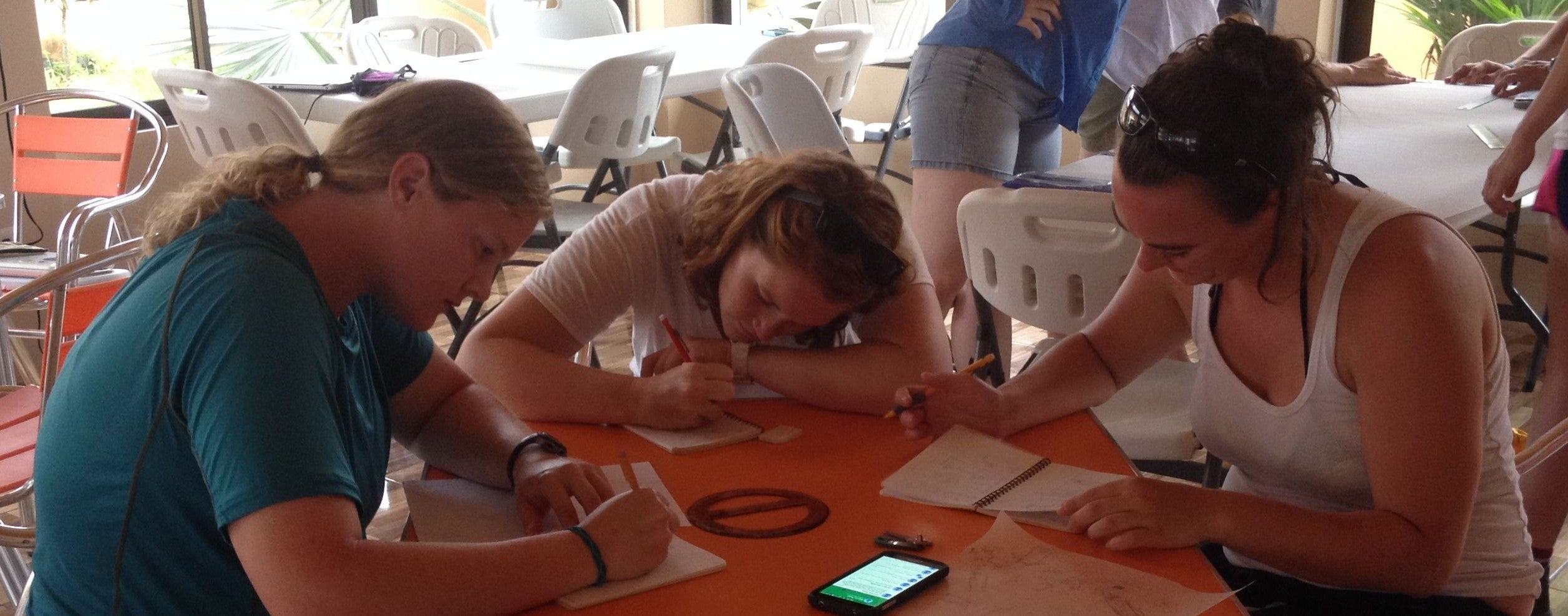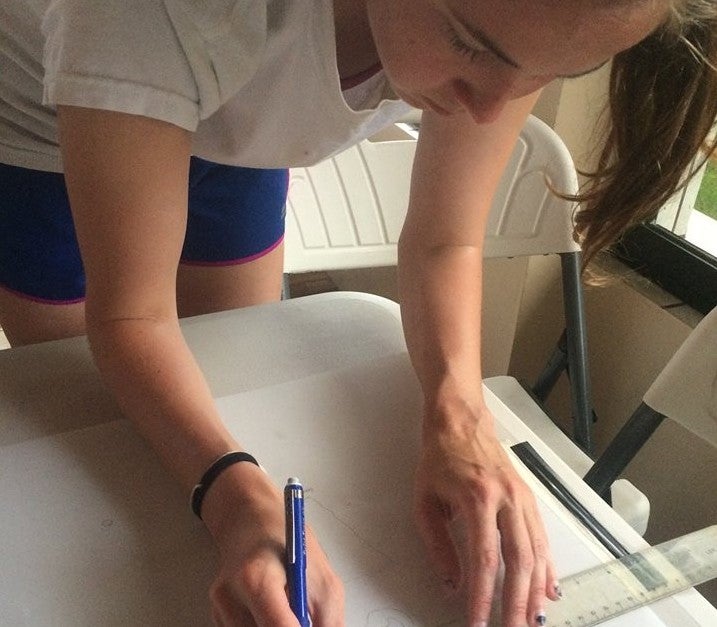Over the last two days, Sydney, Kelsey, Bettie, and I worked on recording the small boat Jamaica Town. Our process ranged from making basic observations, such as how many rows of seat the boat had and its color, to taking detailed measurements of the watercraft. After we collected the data our group worked on another important aspect of archaeology: post-processing.
The first step of post processing occurred in the field. In order to take all the necessary measurements of the boat, we worked in two different pairs. Therefore, Bettie and I worked on half of the vessel and only had half of the information, while Kelsey and Sydney had the other half. To begin compiling data, Sydney and I collaborated in the field to choose a scale for a plan view drawing and began scaling the measurements I already had for the breadth of the boat. We were able to draw a “bird’s eye view” for the front half of vessel using a clipboard and mylar paper while sitting on the beach. (There are certainly worse places to compile data!) We then handed off the drawing to Bettie and Kelsey so they could scale the measurements for the stern portion of the boat and add on to the drawing.
The next day we reconvened to digitally compile our information in Excel. We recorded and organized information such as the breadth, depth, centerline, and profile of Jamaica Town. At this point, however, we encountered a small problem. Each team typed up their own data, but the Internet at our hotel crashed, so we could not compile the information quickly. Rather than re-type everything, we decided to wait until later to make a complete spreadsheet. Next, we used our collected measurements to draw a representation of how the height of the boat changed between the gunnel and the keel. To our (slight) annoyance, this drawing did not turn out as well as our plan view. Luckily, we did end up with one good drawing, and plan on digitizing the drawing to create a finished product soon.
Although post- processing has presented some challenges, it is rewarding to see how the raw information comes together. Compiling data requires team work and cooperation, because everyone needs to report their findings and contribute to the final product in order for the information to be accurately assembled and analyzed. Our group is not finished working on the Jamaica Town yet, though. We still need to amass all our collected information, digitize our plan view, and create a photo log for the vessel. We are all looking forward to seeing how everything comes together and what new challenges the process might present!
-Emily

